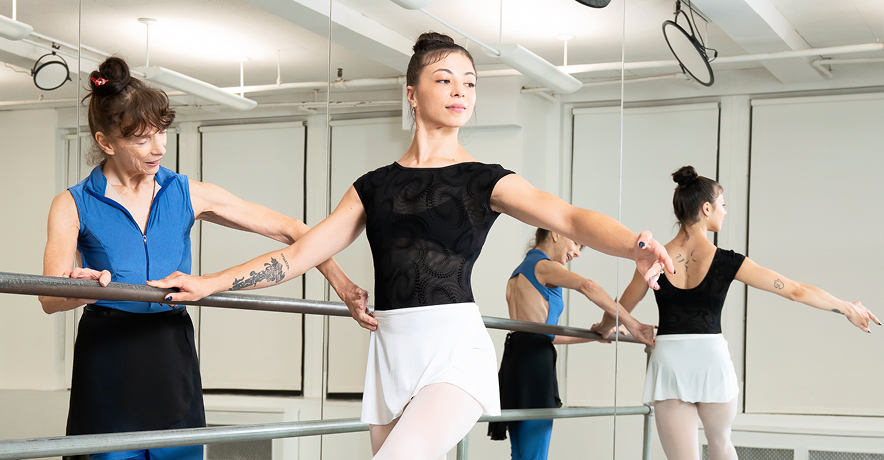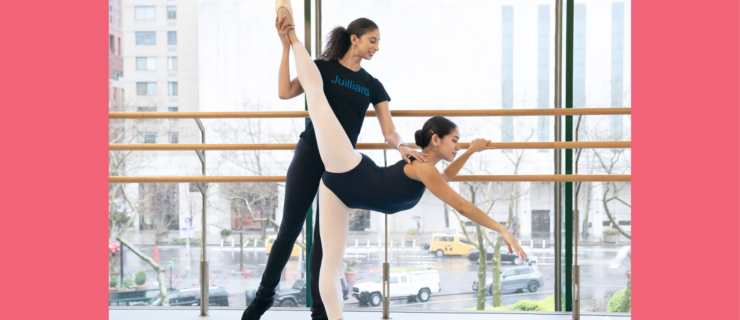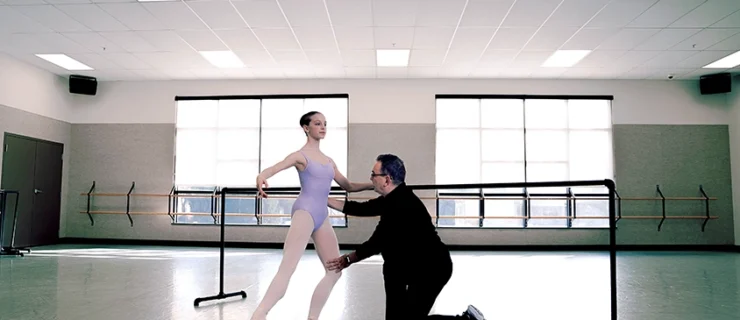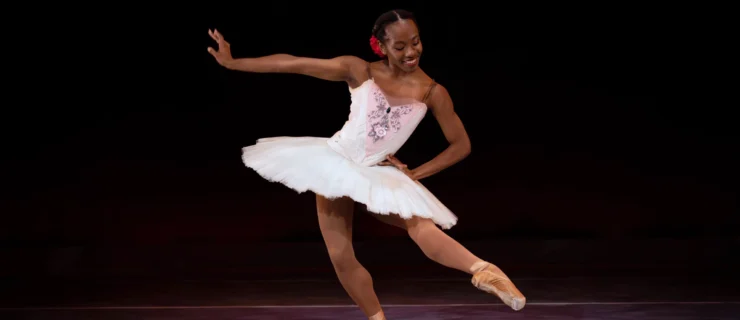Breaking Down Grand Rond de Jambe
Grand rond de jambe is a moving display of fluidity and precision—but it can be challenging for dancers of any level. Dorit Koppel, who has taught adult ballet students for nearly 30 years at Broadway Dance Center, emphasizes proper alignment and visualization when coaching her students on this movement. Here, she shares her insights.
Solidifying the Basics
Make sure to maintain proper placement in rond de jambe en dehors and en dedans on the floor. When you’re ready to raise the gesture leg, begin by lifting it only to 20 degrees. Focus on stabilizing your torso and standing leg. As you become stronger, advance to a 45-degree extension, then to 90 degrees.
To build strength in the core, hips and inner thighs, and to develop the necessary coordination in your torso, spine, back and neck, Koppel suggests taking Pilates classes.
Moving From Barre to Center
When you are comfortable performing grand rond de jambe at the barre, apply what you’ve learned as you dance in the center. “Without the barre, you have much more mobility to allow the leg to rotate when you take it to the écarté line and then to the arabesque,” Koppel says. Reach longer out of the gesture hip, stretching the leg. “It creates space in the hip to rotate more, so you can find the écarté derrière [en dehors], or the écarté devant [en dedans].”
Correcting Common Mistakes
Avoid dropping the gesture hip as it moves from à la seconde to écarté derrière. Dancers often cheat by attempting to “flip” the gesture leg into the next position. “They have to delay, delay, delay, and in the last second, it becomes arabesque,” Koppel says. In en dedans, “As soon as the leg starts moving to the side from the back, the dancer has to immediately rotate deep in the hip.”
Tucking the pelvis is another error Koppel frequently sees in en dedans. “From the side to the front, we have to keep a long, neutral spine instead of tucking under and using the contraction in the abdomen to raise the leg to the front,” she says. Be careful not to squeeze the gluteus muscles to bring your leg to the front, as this will lead the tailbone to tuck.
Putting It All Together
En dehors:
- Envision beginning to create a large circle as you extend devant.
- When carrying your leg à la seconde, lift your torso to create space in your hips.
- Think of your gesture leg reaching behind your ear as it achieves its maximum rotation to the side.
- Bring your body slightly forward and reach the leg diagonally back to écarté derrière, opening your gesture hip.
- Lift your torso again when your gesture hip moves to arabesque, to create space for that leg to turn out.
En dedans:
- As you bring your gesture leg from arabesque to écarté derrière, imagine reaching further out of the hip.
- Slowly adjust the torso to come upright into second position.
- When bringing your leg forward from second position, lift upward again, moving the spine into a neutral position.
- Envision creating space between the spine and standing hip, and between each vertebra.
- Anchor the standing side of your body to allow the opposite side to isolate and rotate freely into devant.







